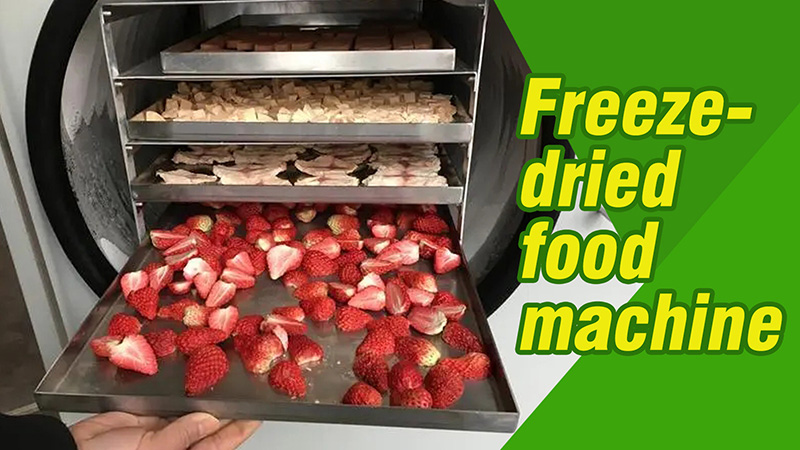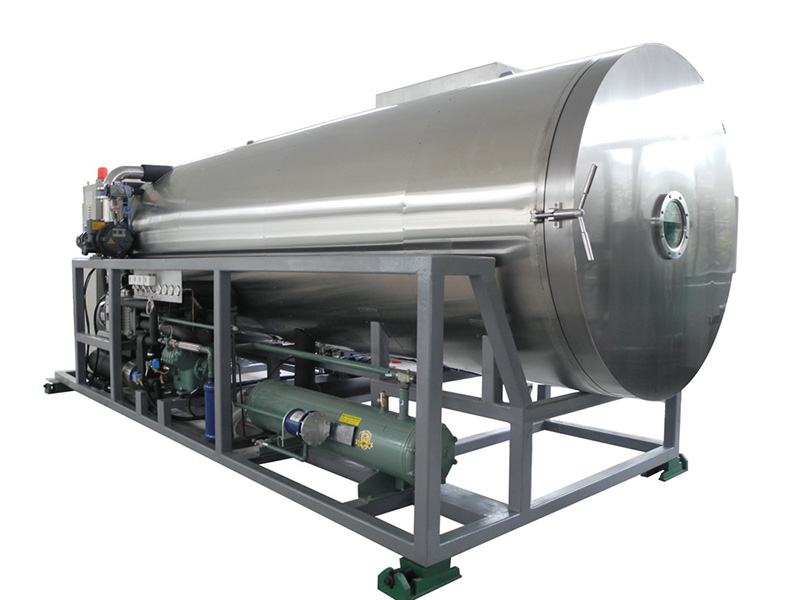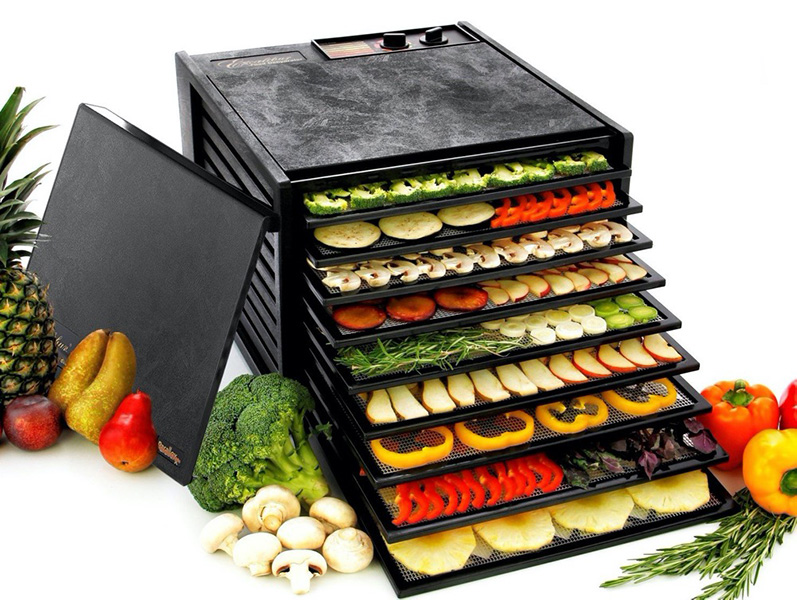
Content Menu
● Introduction to Freeze Drying Technology
● Understanding the Freeze Drying Process
● The Rise of Home Freeze Dryers
>> Features of Modern Home Freeze Dryers
● Benefits of Using a Food Freeze Drying Machine
● Commercial Applications of Freeze Drying Technology
>> Food Industry
>> Pharmaceutical Industry
>> Space Exploration
● Choosing the Right Freeze Dryer for Your Needs
● Tips for Successful Freeze Drying
● The Future of Freeze Drying Technology
● Conclusion: Embracing the Freeze Drying Revolution
● Frequently Asked Questions
>> 1. How long does the freeze drying process take?
>> 2. Can all foods be freeze-dried?
>> 3. How do freeze-dried foods compare nutritionally to fresh foods?
>> 4. Is a home freeze dryer worth the investment?
>> 5. How do I rehydrate freeze-dried food?
Introduction to Freeze Drying Technology
Freeze drying, also known as lyophilization, is a cutting-edge food preservation method that has gained significant popularity in recent years. At the heart of this innovative process is the food freeze drying machine, a sophisticated device that removes moisture from food while preserving its nutritional value, flavor, and texture. This comprehensive guide will explore the world of freeze drying, its benefits, and how you can harness this technology for both home and commercial use.
Understanding the Freeze Drying Process
The freeze drying process is a marvel of modern food preservation technology. It involves three main steps:
1. Freezing: The food is rapidly frozen to temperatures between -30°F and -50°F (-34°C to -45°C).
2. Primary Drying (Sublimation): A vacuum is created, and the frozen water in the food is converted directly from ice to vapor without passing through the liquid phase.
3. Secondary Drying (Desorption): Any remaining moisture is removed through evaporation, leaving the food with only 1-2% of its original water content.
This process results in food that can be stored for extended periods without refrigeration while maintaining its original properties when rehydrated.

The Rise of Home Freeze Dryers
While freeze drying was once limited to large-scale commercial operations, the technology has now become accessible to home users. Home freeze dryers have revolutionized the way individuals approach food preservation and long-term storage. These compact machines allow homeowners to create their own freeze-dried foods, from fruits and vegetables to complete meals and even pet food.
Features of Modern Home Freeze Dryers
Today's home freeze dryers come equipped with a range of features designed for ease of use and efficiency:
- Digital interfaces for simple operation
- Automatic cycle completion alerts
- Various tray sizes to accommodate different food types
- Energy-efficient designs
- Quiet operation for home use
Benefits of Using a Food Freeze Drying Machine
The advantages of freeze drying food are numerous and significant:
1. Long-term food storage: Freeze-dried foods can last up to 25 years when properly packaged.
2. Nutritional preservation: Up to 97% of the food's original nutritional value is retained.
3. Flavor and texture retention: Unlike other preservation methods, freeze drying maintains the food's original taste and structure.
4. Lightweight and compact: Freeze-dried foods are lightweight, making them ideal for camping, emergency preparedness, and space-saving storage.
5. Versatility: A wide range of foods can be freeze-dried, including fruits, vegetables, meats, dairy products, and complete meals.
6. No additives required: The process naturally preserves food without the need for chemical additives.

Commercial Applications of Freeze Drying Technology
While home freeze dryers have gained popularity, commercial freeze dryers continue to play a crucial role in various industries:
Food Industry
Large-scale food manufacturers use industrial freeze dryers to produce a wide range of products, including:
- Instant coffee
- Freeze-dried fruits for cereals and snacks
- Ingredients for ready-to-eat meals
- Pet food
Pharmaceutical Industry
Freeze drying is essential in the production of certain medications and vaccines, where preserving the active ingredients is crucial.
Space Exploration
NASA and other space agencies rely on freeze-dried foods to provide astronauts with nutritious meals during long-duration missions.
Choosing the Right Freeze Dryer for Your Needs
When selecting a food freeze drying machine, consider the following factors:
1. Capacity: Determine how much food you plan to freeze dry regularly.
2. Size: Ensure you have adequate space for the machine in your home or facility.
3. Energy efficiency: Look for models with lower power consumption to reduce operating costs.
4. Ease of use: Choose a machine with user-friendly controls and clear instructions.
5. Maintenance requirements: Consider the frequency and complexity of required maintenance.
6. Price: Balance your budget with the features and capacity you need.
Tips for Successful Freeze Drying
To get the most out of your food freeze drying machine, follow these tips:
1. Prepare foods properly: Cut foods into uniform sizes for even drying.
2. Avoid overlapping: Arrange food items in a single layer on trays.
3. Pre-freeze high-moisture foods: This can reduce overall drying time.
4. Experiment with different foods: Try freeze drying various items to discover what works best.
5. Store properly: Use airtight containers or mylar bags with oxygen absorbers for long-term storage.
6. Label and date: Keep track of when items were freeze-dried for optimal rotation.
The Future of Freeze Drying Technology
As freeze drying technology continues to evolve, we can expect to see:
- More energy-efficient models
- Increased automation in the freeze drying process
- Integration with smart home systems for remote monitoring and control
- Development of new applications beyond food preservation
Conclusion: Embracing the Freeze Drying Revolution
Food freeze drying machines have opened up new possibilities for food preservation, both at home and in commercial settings. By understanding the process, benefits, and applications of freeze drying technology, you can make informed decisions about incorporating this innovative method into your food storage strategy. Whether you're preparing for emergencies, reducing food waste, or simply exploring new culinary horizons, freeze drying offers a versatile and effective solution for preserving the foods you love.

Frequently Asked Questions
1. How long does the freeze drying process take?
The freeze drying process typically takes between 20 to 40 hours, depending on the food type and quantity. Fruits and vegetables generally dry faster than meats or complete meals.
2. Can all foods be freeze-dried?
While most foods can be freeze-dried, some are better suited to the process than others. Foods with high fat content, such as avocados, may not freeze dry well. However, fruits, vegetables, meats, dairy products, and many prepared meals are excellent candidates for freeze drying.
3. How do freeze-dried foods compare nutritionally to fresh foods?
Freeze-dried foods retain up to 97% of their original nutritional value. This is significantly higher than other preservation methods like canning or dehydrating, which can result in greater nutrient loss.
4. Is a home freeze dryer worth the investment?
For many people, a home freeze dryer is a worthwhile investment. It allows for long-term food storage, reduces food waste, and provides a way to preserve homegrown produce or bulk purchases. However, the initial cost can be significant, so it's important to consider your specific needs and usage before making the investment.
5. How do I rehydrate freeze-dried food?
Rehydrating freeze-dried food is simple. Add warm or room temperature water to the food and let it sit for a few minutes. The amount of water and time needed will vary depending on the food type. Some freeze-dried foods, like fruits, can be enjoyed without rehydration as crispy snacks.












